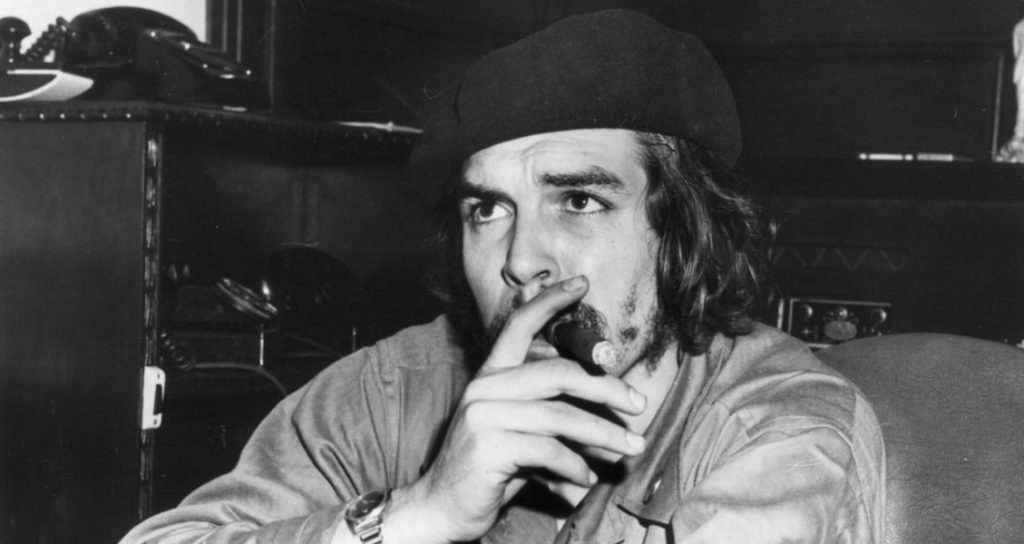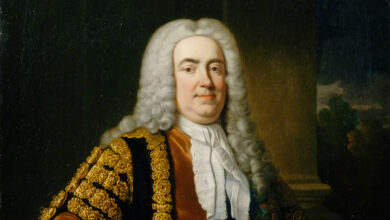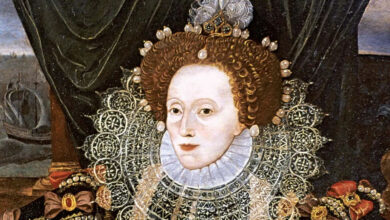
Possibly one of the most famous of all communist revolutionaries has, in modern times with America’s youth, come to symbolize rebelliousness against oppression. However, is this legacy warranted and who was the real Che Guevara before he was the popular t-shirt icon?
Ernesto Guevara was born on 14 June 1928 in Rosario, Argentina, but according to a biographer, Che’s mother is said to have remarked that the birth certificate was falsified to try and hide an illegitimate pregnancy and that he was actually born on 14 May. Che was born into a middle-class family and seemed to have a fairly stereotypical life for a member of the middle class. He was an avid athlete and sports aficionado playing golf, swimming, football, rugby, and shooting in addition to more intellectual pastimes such as playing chess which he learned from his father.
Che was also an avid reader with a wide variety of tastes, reading anything from Karl Marx to Robert Frost, Jules Verne and HG Wells to Friedrich Engels. So, as well as being a sporting aficionado, Che’s Guevara’s love of reading also made him an astute academic.
In 1948, he began studying for a degree in medicine at the University of Buenos Aires. At the same time, he also found that he had a keen desire to explore the world. This led him to break up his monotonous college routine with long road trips on a motorcycle. Some of his trips were as long 5,000 miles such as his trip in 1951 during which he toured parts of South America, a tour which lasted the best part of nine months.
During his travels throughout Latin America, Che had the opportunity to observe a wide variety of living conditions, working conditions, and poverty that he himself had not known. He even spent a few weeks volunteering at a leper colony in Peru. As Che Guevara travelled, he came across desperate workers, some of whom did not even own blankets and his resentment towards capitalism which he saw as exploiting these poor people began to grow.
The massive amounts of poverty that he witnessed from peasant farmers to miners showed him that something in the economic systems of these countries was not working and he believed capitalism to be at fault, partly due to his extensive reading of Karl Marx and other communist writers during his school years.
Taking part in militia groups in Guatemala in 1953 changed Che’s views firsthand when he viewed what he saw as American imperialist tendencies when the United States sought to, and succeeded in, overthrowing the government of Guatemala to help ensure that American fruit prices stayed low. This act even earned the moniker ‘banana republic’ since these countries were largely bought and paid for by plantation owners who were more in favour with the US than the communists that the country had been leaning towards previously. This finally cemented Che Guevara’s view about what was good about communism and what was evil about America and capitalism.
While spending time doing medical work in Mexico in 1954, Che Guevara eventually met Fidel Castro and his brother Raul who were making plans to overthrow the Cuban government. Che and other revolutionaries viewed this government as an illegitimate puppet state of the United States and one that they strongly believed in liberating with their “enlightened” communist views.
The revolution concluded in January 1959 when Che Guevara entered Havana on the 2nd with Fidel Castro following him on the 8th. Che had significant status in the new government, but, as with many governmental overthrows, mock trials and summary executions became the norm with possibly as many as 20,000 Cubans being killed, many on trumped-up charges or accusations of war crimes, with others being sentenced to torture and other grotesque punishments.
Che Guevara took an active role in these mock trials and was personally in charge of organizing many of the firing squads with some saying he was always excited to do so as he saw it as a form of revolutionary justice.
For a while, Che continued to enjoy his status in Castro’s government and was present during the failed invasion of Cuba by the United States, during what became known as the Bay of Pigs invasion. He also played a key part in forming a strong relationship between Cuba and the Soviet Union and the deployment of Soviet missiles on the island which led to the Cuban missile crisis in October 1962, an event that historians believe is the closest that the world came to nuclear war.
He soon became uncomfortable staying in one place though and sought to become involved in revolutions elsewhere. He left Cuba in 1965, bound for the Congo, following which he travelled to Bolivia. Che Guevara was captured by Bolivian troops that were being supported by the CIA and is said to have shouted, “do not shoot! I am Che Guevara and I am worth more to you alive than dead.” However, despite the protests of the CIA, who wanted to interrogate him, the Bolivian president had had enough of the guerilla insurrectionist and ordered Che Guevara executed, and order which was carried out on 9 October 1967, when Che was 39 years old.
Possibly because of his young death and possibly because of a lack of knowledge surrounding the particulars of his direct involvement in the revolution and some of the atrocities that occurred at the time, Che Guevara’s legacy has remained remarkably unstained. Some see him as a noble revolutionary who helped to end the oppression of the poor. However, those who were murdered, raped, tortured, exiled, and had everything taken from them by Che Guevara and his revolutionaries or guerrilla fighters have a significantly different view of him than the general American teenager who likes to wear his likeness on a t-shirt.




